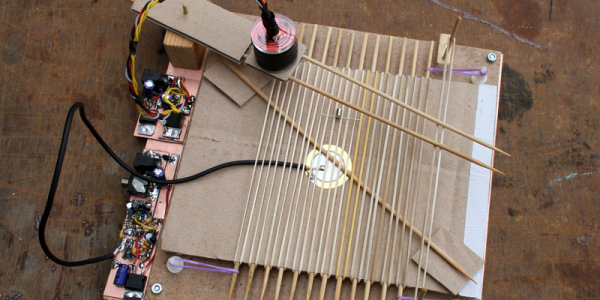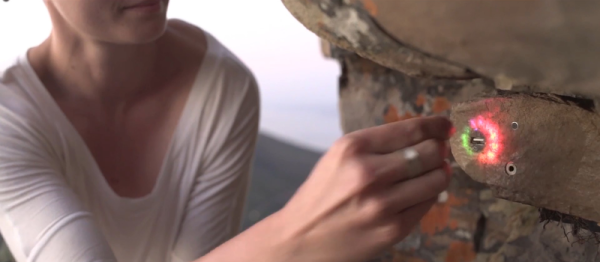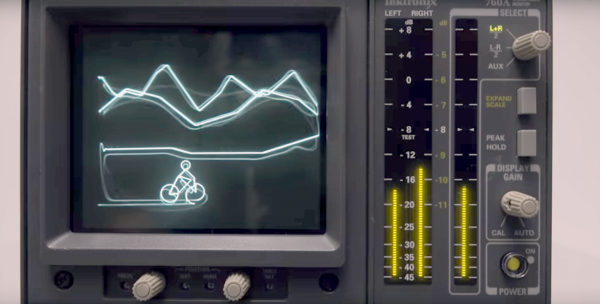Sometimes Hackaday runs in closed-loop mode: one hacker makes something, we post it, another hacker sees it and makes something else, and we post it, spiraling upward to cooler and cooler hacks. This is one of those times.
One of our favorite junk-sound-artists and musical magicians, [Gijs Gieskes], made this magnetic-levitation, rubber-band, percussive zither thing after seeing our coverage of another magnetic levitation trick. Both of them simply have a Hall sensor controlling a coil, which suspends a magnet in mid-air. It’s a dead-simple circuit that we’ll probably try out as soon as we stop typing.
But [Gijs] took the idea and ran with it. What looks like a paperclip dangles off the magnets, and flails wildly around with its tiny steel arms. These hit a zither made of rubber bands with a bamboo skewer as a bridge, pressing down on a piezo. The rest is cardboard, copper-clad, and some ingenuity. Watch it work in the video embedded below.
Continue reading “Maglev Drummer Needs To Be Seen And Heard”


















